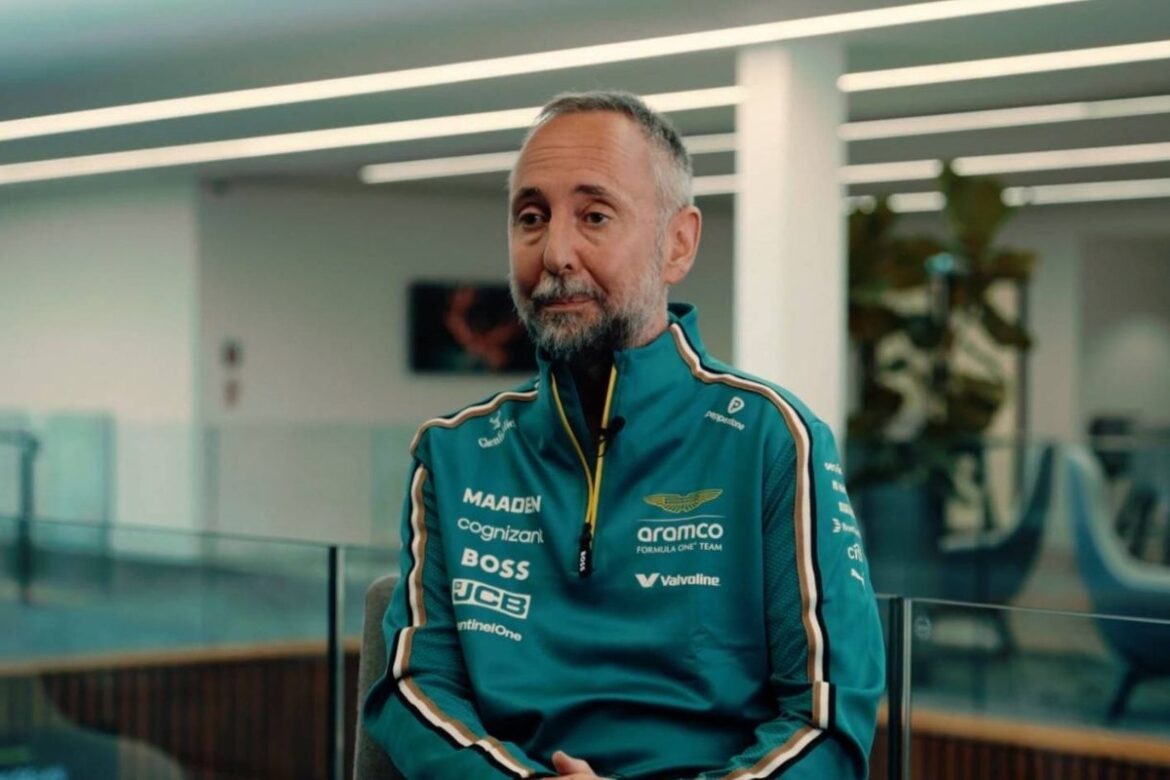Enrico Cardile’s Impact on Aston Martin’s F1 Ambitions
The world of Formula 1 is constantly evolving, and the recent appointment of Enrico Cardile as Chief Technical Officer at Aston Martin is a significant development in the team’s strategy for the upcoming 2026 season. Cardile’s extensive experience, particularly from his time at Ferrari, is expected to have a transformative influence on Aston Martin’s performance and technical capabilities as the team prepares to navigate the new regulations set to take effect in 2026.
Transition to Aston Martin
Enrico Cardile officially joined Aston Martin at the beginning of August after a lengthy period that included a year-long gardening leave. This delay was a result of extensive legal proceedings in Italy, which underscored the high stakes associated with his transition from Ferrari to Aston Martin. His arrival is being viewed as a critical milestone for the team, particularly as it aims to establish itself as a competitive force in Formula 1.
The leadership at Aston Martin, particularly CEO Andy Cowell, is optimistic about the impact that Cardile will have on the team’s future. Cowell has emphasized Cardile’s deep understanding of the sport, highlighting his organizational skills and technical acumen. Such attributes are essential as the team seeks to enhance its performance amid the challenges posed by the new regulations.
Aiming for the 2026 Regulations
Aston Martin’s focus on the 2026 regulatory overhaul is not merely a strategic decision; it reflects a broader ambition to reposition the team as a frontrunner in Formula 1. The changes in regulations present both challenges and opportunities, and the team is assembling a powerhouse roster that includes the legendary designer Adrian Newey. Newey’s role as managing technical partner has been crucial in steering the design and development of the new car.
Cowell has expressed enthusiasm about the collaborative environment that Cardile’s arrival fosters. Working alongside established talents like Newey and other skilled engineers promises to invigorate the team’s approach to car development. There is a palpable sense of excitement within the team as they work towards a common goal: to elevate Aston Martin’s standing in the competitive landscape of Formula 1.
The Team’s Growth and Recent Performance
In recent years, Aston Martin has seen significant growth, both in terms of personnel and performance. The team has expanded rapidly, and this increase in resources is expected to bolster their efforts as they tackle the challenges of the upcoming seasons. Despite facing some setbacks in the current season, including disappointing performances at certain races, the team has managed to secure notable results, such as double points finishes in Hungary and the Netherlands.
These results have helped Aston Martin climb the Constructors’ Championship standings, showcasing their potential to compete at higher levels. However, the team recognizes that consistency will be key to maintaining and improving their position. The recent challenges, such as issues with car components—like the front suspension failure experienced by Fernando Alonso at Monza—serve as learning opportunities for the team. Cowell has noted the importance of understanding these technical difficulties to foster growth and improvement.
The Role of Upgrades and Development Focus
As the team navigates the current season, they have implemented several smaller upgrades to enhance performance. These improvements, including an upgraded floor and front wing, have allowed drivers Alonso and Lance Stroll to remain competitive within the midfield. Cowell has expressed satisfaction with the team’s ability to maximize the value of their limited resources, demonstrating effective teamwork among department leaders to determine the best paths for development.
Despite the focus on the 2026 car, the team is also committed to making the most out of the current car, the AMR25. Cowell has emphasized the balance between addressing ongoing issues while simultaneously looking ahead to future developments. The insights gained from recent challenges will inform their strategies moving forward, ensuring that the team is well-prepared for the changes that lie ahead.
The Importance of Team Dynamics
The culture and dynamics within the Aston Martin team play a critical role in their ability to innovate and achieve success. Cowell has highlighted the positive atmosphere fostered by the arrival of experienced professionals like Cardile and Newey. This collaborative spirit is essential as the team strives to create a winning formula that can compete with the established giants of Formula 1.
The integration of new talent like Cardile not only brings fresh perspectives but also reinforces the existing knowledge within the team. Cowell’s excitement about working alongside such experienced minds reflects a broader commitment to building a cohesive unit capable of tackling the complexities of Formula 1 racing.
Looking Ahead
As Aston Martin gears up for the future, the influence of Enrico Cardile is expected to resonate throughout the organization. His experience and technical expertise will be invaluable as the team embarks on this ambitious journey toward a more competitive standing in the sport. With the combined efforts of Cardile, Newey, and the rest of the team, Aston Martin aims to harness the changes brought about by the 2026 regulations to position themselves as serious contenders.
The upcoming seasons will undoubtedly test the resilience and adaptability of the team, but with a strategic focus on collaboration, innovation, and continuous improvement, Aston Martin is poised to make significant strides in the highly competitive arena of Formula 1. The collective enthusiasm within the team fuels their determination to overcome challenges and seize opportunities, ultimately working towards a future where Aston Martin can consistently challenge for podiums and victories.
